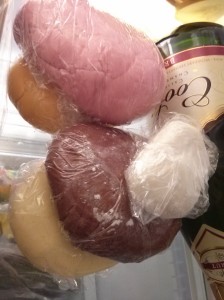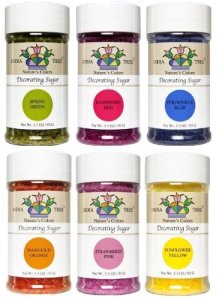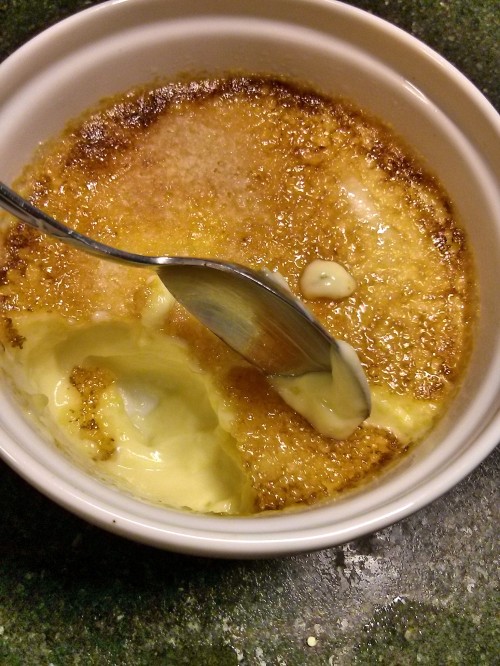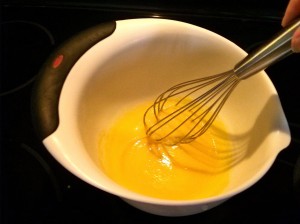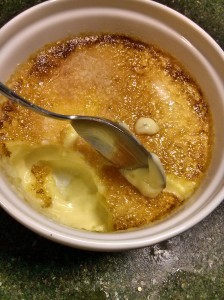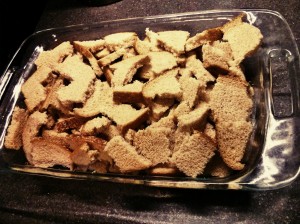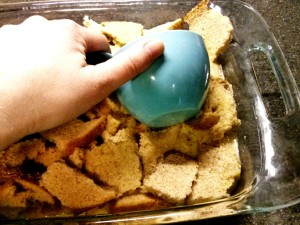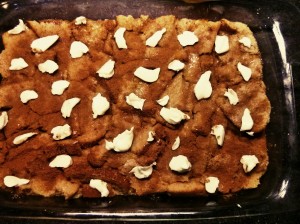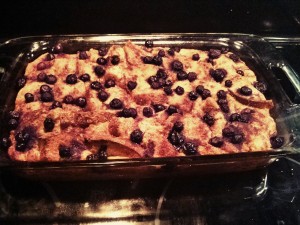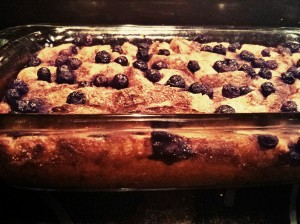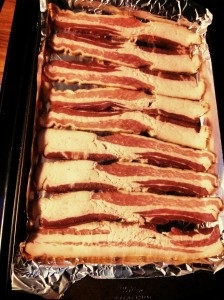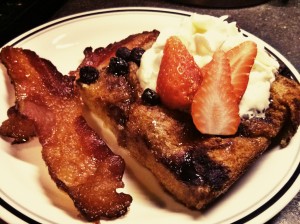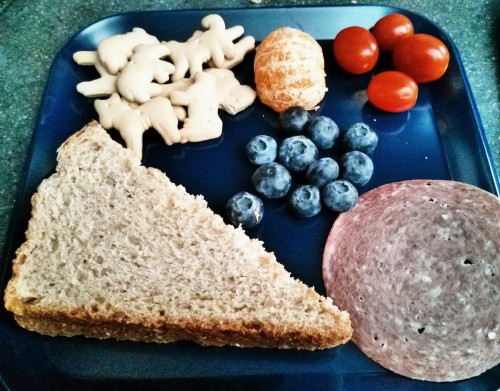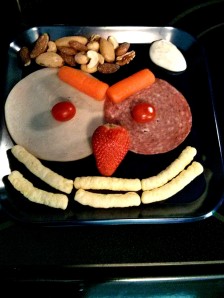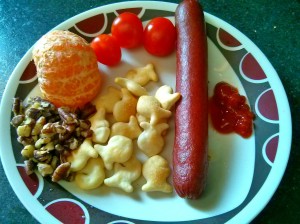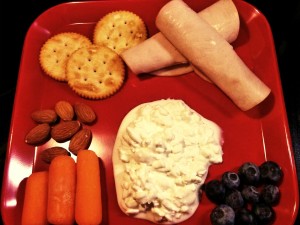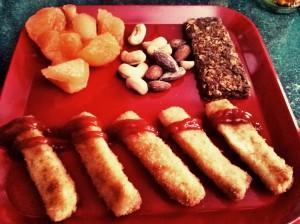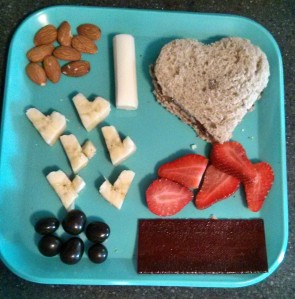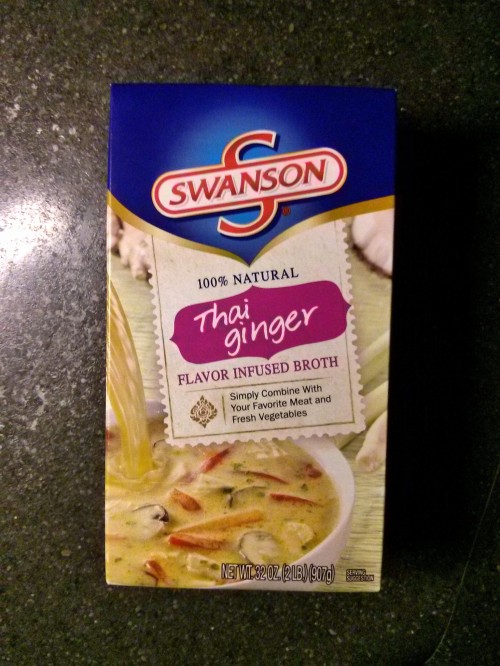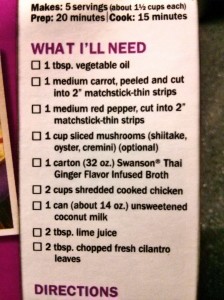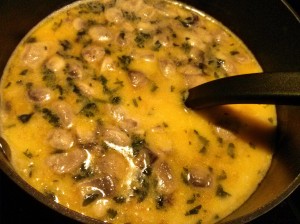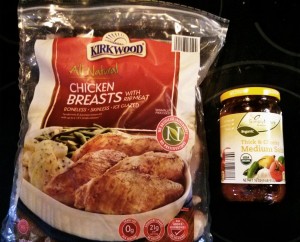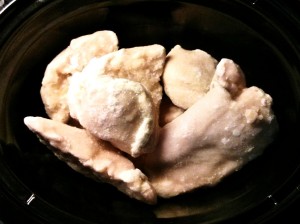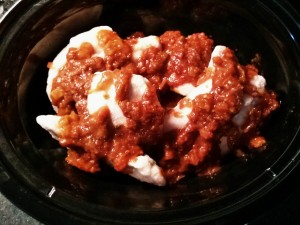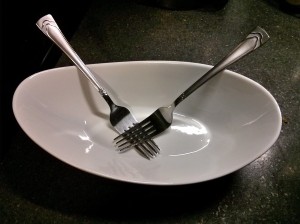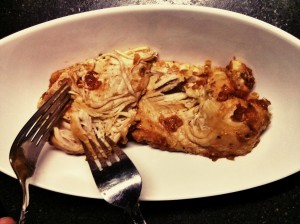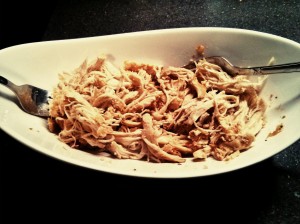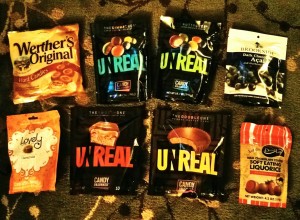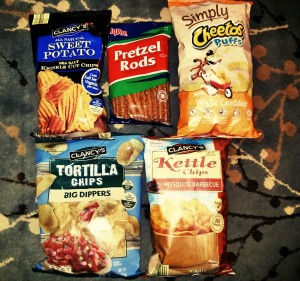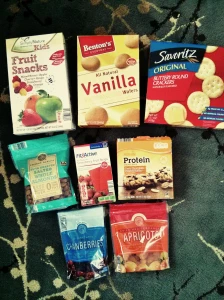In Junior High I was obsessed with taking all those little quizzes in teen magazines. I think, like most crazy adolescents, I was desperate to create an identity for myself. Well, I must have done one too many What’s the best perfume for your personality? tests, because by the time I graduated from high school I thought personality profiling was a total joke.
I’d guess that’s probably how most people feel about it. That profiles are equivalent to those generalized horoscopes in the newspaper that could fit anyone if they really wanted it to. It’s totally understandable as there are a lot of poorly done personality tests and profiles out there. Many of them make people feel stereotyped in very negative ways. Introverts, for instance, are pegged as not liking other people, which is untrue. Or thinkers are perceived as unfeeling machines; also not true.
Labels can be very hurtful and off-putting. Nobody wants to be typecast, especially as something they are not. Probably explains why most people avoid taking personality tests in the first place. But I’ve come to see that personality tests can actually do the opposite. I believe if you truly understand your God-given personality, it is liberating. And furthermore, if you learn how to love other people for who they really are, it can free them too.
We all chain ourselves with fears. Fears that we are too different or needy or incompetent or unfeeling or inadequate or unlovable. Fear that who we are at our core is not how we should be. Love breaks those chains. We need to learn how to love the people in our lives as individuals. What better place to start than with understanding the way they were made to operate!
I’m speaking from a Christian point of view. I believe when God gave us LOVE as the greatest command, this is part of what he meant. We cannot truly love if we do not understand. Yes, we can do loving acts without full understanding. There’s definitely a place for that. But for people to know deep, changing, earth-moving love they need to be understood and accepted as they are.

Even if you do not hold the same beliefs as I do, I’m sure you can agree that the people you know have their own tendencies. Maybe your brother is really sensitive to criticism, and everyone knows they have to treat him with kid-gloves – “That’s just the way he is.” Or maybe your mother randomly breaks out into song at the grocery store – “That’s just the way she is.” Or perhaps that girl you work with just won’t stop talking and talking and talking – “That’s just the way she is.” Or maybe your son flies into a screaming, crying rage because he can’t get his boots on (like mine) – “That’s just the way he is.” I think you get the picture. People do weird, annoying things. But they’re mostly weird and annoying to us because we don’t understand why they’re doing them.
Let’s seek to understand.
I’m sure most of you have heard of the Myers-Briggs test; it’s the one with all the letters, like INTJ or ESFP. This mother-daughter team, Myers & Briggs, compiled a list of questions aimed at identifying people’s four key personality characteristics based on the work of famous psychologist Carl Jung. They started working on it during World War II to help women entering the workforce for the first time identify what sort of jobs they would be good at. There’s your mini-history lesson for the day. 🙂

In my research, I found the Myers-Briggs Type Indicator (MBTI) to be the most accurate both for myself and for the people in my family. Unfortunately, I also found that most MBTI personality tests are ridiculously easy to manipulate. That is, you can get the outcome you want instead of an accurate one. Usually this is done subconsciously, because people give answers for the way they would like to be instead of the way they are. In my experience, the most reliable results came from looking at each of the personality traits and deciding if it fit or not.
Even this can be confusing, because most people have a little bit of each trait in their personality. Therefore, it can be tricky to determine certain letters in areas where you are very moderate. I think things get muddled further because as adults we’ve learned (hopefully) socially acceptable behavior, and we’ve suppressed or changed ourselves to fit into our environments a little better. Sometimes it can be hard to tell what behaviors have been learned and what behaviors are our true selves.
But look at kids. They’re pretty straight forward. They haven’t learned to filter themselves yet. If you have children in your life you’ll know what I mean. When they’re mad, you know it. When they’re sad, you know it. When they’re excited, you know it. BUT those emotions play out differently for each child. With my kids, when J is mad he’s scowly and defiant. When Z is mad all hell breaks loose – he throws stuff, screams, growls, cries, stomps, etc. When J is sad he may shed a few tears and go off my himself. When Z is sad he weeps uncontrollably and gets very clingy. Any guesses who our extreme feeling child is? 🙂
Since it’s so obvious with children, let’s all think back to how we were as children. Doing that for myself unclouded the mystery that had been surrounding all this personality stuff in my mind. I found a book on child personality identification that has been extremely useful (with both kids and adults). It’s called Nurture by Nature: Understand Your Child’s Personality Type – And Become a Better Parent by Paul D. Tieger and Barbara Barron-Tieger. Our local library had it, but I wound up buying a copy because it is an excellent reference book for parents. If you have kids, you should get it.
by Paul D. Tieger and Barbara Barron-Tieger. Our local library had it, but I wound up buying a copy because it is an excellent reference book for parents. If you have kids, you should get it.
Here’s one of my favorite quotes from Nurture by Nature:
So many of the conflicts we experience with our children have little to do with what is happening, and everything to do with the way it is happening. By insisting that our children do things the way we do them, we undermine their natural inclinations and communicate criticism rather than acceptance and approval. Wherever possible, we ought to save the corrections for the big things and let the little things go.
I can’t overstate how helpful it has been as a parenting tool. It goes through the major stages of childhood (baby, preschool, school age, adolescence) for each personality type, and gives practical advice for helping your child through the challenges of each stage. It’s simple things like the most effective way to communicate with them, and the areas they are most likely to struggle in. For me, this advice has also been helpful for learning how to relate better to adults of other personality types as well.
Nurture by Nature does an excellent job detailing each of the eight personality traits. I’ve tried to summarize each one for you. Most of it is based on information I’ve gathered from different sources pertaining to children’s personalities. If you want some detailed examples, you should definitely check out the book. Have I said that enough times yet? 🙂 There are also some online resources that you may find helpful. My favorites are 16 Personalities and The Personality Page.
Alright, moving on to the good stuff: type determination.
There are four groups of extremes; each on a sliding scale. You need to figure out which side of the scale you land on. When you’ve done this you’ll end up with a four letter type.
The trait groups are Introvert (I) – Extrovert (E), Sensing (S) – Intuitive (N), Thinking (T) – Feeling (F), and Judging (J) – Perceiving (P). Don’t let the connotations you may have for words like “judging” sway you. Try to read the descriptions objectively and decide which way you lean. Keep in mind that you’ll probably relate to descriptions from both extremes, but try to think about how you are in most situations.
I found it helpful to draw the little scales myself and mark where I thought each person in our family landed. But don’t feel pressured to do all the odd things I do… 🙂
Here we go!
Introvert or Extrovert: Which way is your energy typically directed?
I —————I————— E
Introverts: Energy is naturally directed inward toward own thoughts. Feel energized after withdrawing from other people and thinking alone. Drained by too much interaction, especially with large groups of people. Prefer one-on-one playing with familiar people. Usually reflect on information before speaking or acting. Like to get thoughts out once they have been fully thought over. More selective about activities that interest them, and are very passionate about their hobbies – they become “specialists” on a subject. Tend to be perceived as shy or aloof in new situations, but really they just take longer to feel comfortable speaking up or joining in (like to wait and watch).
Extroverts: Energy is naturally directed toward other people or things. Feel energized by being around other people. Tend to get overexcited by too much interaction, and need to talk to someone to process it and calm down. Usually louder children and vocalize/talk all the time. Think while speaking, so can easily lose train of thought if interrupted or have to wait to speak (they are very frustrated by this and tend to interrupt other people so they don’t forget their own thoughts). Don’t like to play alone for long. May have behavior problems in school, because it is hard for them to sit still and be quiet for long periods of time (need interaction to stay focused). Do first, reflect later – can appear very confident. Jump into new situations; eager to play with anyone and often like being the center of attention.
Sensing or Intuitive: What do you naturally notice about the world?
S —————I————— N
Sensing: Learn primarily through the five senses. Understanding of world is based on past experiences; need routines more than non-sensing children. Like to have examples to follow in new situations or with unfamiliar projects. Like to do things step-by-step, and work at a steady pace. Excellent memory for details and facts. Tend to be pickier eaters or have strong aversions/preferences regarding fabrics and smells. Enjoy tactile stimulation: playing with water, mud, clay, sand, etc. Have themed collections and/or a “lovey”. Engaged by lots of action; bored by discussion of rules/ideas, just eager to start playing. Prefer to play by the rules and/or use skills they’ve already mastered. Much more “in their body”.
Intuitive: Focus mostly on meanings and connections they perceive. Like variety and learning new things; become bored quickly with routine/repetition. Always looking toward the future – fantasize about the way things could be; less realistic sense of how things actually are (may be perceived as liars when ignore conflicts between fantasy and reality). Don’t usually act in a step-by-step fashion. Tend to be more imaginative, and are creative problem solvers. Unconventional thinkers (may be frustrated/hurt if people are not enthusiastic about their ideas or say they are unrealistic). Have eclectic “collections” of prized possessions (meaning behind the object is more important than object itself). Make things up as they go along; love pretend play and making up new games (like discussing rules/ideas at length). Prone to changing up the rules of a game. Much more “in their head”.
Thinking or Feeling: How do you instinctively make decisions?
T—————I————— F
Thinking: Mainly consider unbiased information and logical consequences when making decisions (can still care immensely for people, just don’t base their decisions on their feelings or how it will make others feel). Detached and analytical (step back and weigh pros and cons). Tend to question rules to ensure they are fair and logical. Do not like inconsistency. Hate/do not accept “because I said so” answers. Must respect someone before they can trust them. Highly value directness, clarity, dependability, competence, sincerity, and honesty. May seem blunt, thoughtless, heartless, or selfish; struggle to have empathy. Easily upset by unfairness; do not like favoritism. Objective, assertive, and opinionated; will stand up to older people if challenged. Generally not as good at expressing emotions; can appear to be cold or unaffected (though this is not true). Usually like math and science best. Enjoy competition. Form opinions independently, and stick to their guns.
Feeling: Mainly consider how a decision will effect others or themselves, and if it feels right. Personal and subjective. Very upset if their decision results in another person’s unhappiness. Have a strong desire to be liked; work hard to maintain harmony in relationships. Eager to be in contact with other people. Feeling loved and/or appreciated leads them to trust; usually admire and respect anyone they trust, even if not deserved. Physical contact and affection are extremely important for their proper development. Value kindness, tact, and gentleness. Absorb tension from other people’s conflicts. Easily upset by unkindness, raised or harsh voices, rejection, criticism, and confrontation. Very empathetic; difficult for them to ignore other people’s problems. Usually like humanities and social studies best. Tend to be uncomfortable with competition. Want to know/evaluate others’ opinions before they form their own; more susceptible to peer pressure.
Judging or Perceiving: How do you organize your world?
J —————I————— P
Judging: (This does not mean judgmental.) Very comfortable making decisions, and like when things are decided. Prefer things to be structured, organized, and planned. Uncomfortable with the vague and unknown. Feel anxious when things are unsettled. Don’t like many changes once plans have been made. Transitions can be more difficult. View time as fixed and inflexible; concerned with how much time they have to do something. Usually don’t waste much time and try to be prompt (anxious when late). Rules give comfort and security. Tend to be compliant; may “police” others who are not following the rules. Ordinarily respect authority and fall in line as children, and almost always rebel to some degree as teens.
Perceiving: More comfortable with the process of gathering information to make decisions than actually making the decisions. Spontaneous, impulsive, and comfortable with the unexpected. Eager to explore. Feel anxious when choices must be made; do not like eliminating options. Frequently run out of time to make a decision and so avoid having to make it. Overwhelmed by too many choices. Live in the moment; very flexible. View time as bendable, endless, and renewable; not concerned with timeliness or deadlines. Always asking for “one more minute”. May not be good at finishing what they started. Resist limits, and constantly test them – see them as roadblocks to their explorations. Question or forget rules. Tend to think it is easier/better to ask for forgiveness rather than ask for permission. Easy-going; somehow seem to get out of discipline either with good excuses or charm/humor.
That’s it.
What were your results?
There are 16 possible combinations of all the letters. Hopefully you’ve been able to figure out a type for everyone in your family. If you are still on the fence with a certain letter for someone, you can read the type descriptions you’re torn between (I like 16 Personalities type descriptions best) and decide which one is more fitting. Below, I’ve listed some titles given to each personality, for our family they all seemed very fitting.

ESTJ: Playing by the Rules. The Guardian. The Overseer.
ESTP: Look, Mom! No Hands! The Doer. The Persuader.
ESFJ: Let’s All Be Friends. The Caregiver. The Supporter.
ESFP: Social Butterflies. The Performer. The Entertainer.
ENTJ: Leader of the Band. The Executive. The Chief.
ENTP: Everything’s Negotiable. The Visionary. The Originator.
ENFJ: A Thousand Watts of Enthusiasm. The Giver. The Mentor.
ENFP: A Great Idea? I’ve Got a Million of ‘Em. The Inspirer. The Advocate.
ISTJ: Being a Kid Is Serious Business. The Duty Filler. The Examiner.
ISTP: Making Sense of Things. The Mechanic. The Craftsman.
ISFJ: A Promise Is a Promise. The Nurturer. The Defender.
ISFP: Gentle Free Spirits. The Artist. The Trend Setter.
INTJ: Creating Perfectionism. The Scientist. The Strategist.
INTP: Question Authority. The Thinker. The Engineer.
INFJ: My Secret Garden. The Protector. The Confidant.
INFP: Taking Everything to Heart. The Idealist. The Dreamer.

Understanding personalities has changed our lives in many practical yet significant ways. Most importantly, it has enabled us to know and love each other more deeply.
God made us all different for a reason. Every single person on this planet sees things from a unique perspective. God designed it that way so we would grow to know him better by knowing each other. Christ and the apostles all emphasized the importance of community. One of my favorite hymns growing up had this refrain, “We are many parts. We are all one Body. And the gifts we have, we were given to share. May the Spirit of Love make us one in deed.” Let’s stop suppressing our God-given natures and abilities, and start sharing them and loving other people for sharing theirs. Then watch how the world grows.
I’ll leave you with some words (pictured earlier in the post) to ponder as your mind continues to marinate in all this personality stuff:
To be loved but not known is comforting but superficial. To be known and not loved is our greatest fear. But to be fully known and truly loved is, well, a lot like being loved by God. It is what we need more than anything. It liberates us from pretense, humbles us out of our self-righteousness, and fortifies us for any difficulty life can throw at us.

